Cholera is an infectious disease that causes severe watery diarrhea, which can lead to dehydration and even death if untreated. It is caused by eating food or drinking water contaminated with a bacterium called Vibrio cholera.(1)
History
During the 19th century, cholera spread across the world from its original reservoir in the Ganges delta in India. Six subsequent pandemics killed millions of people across all continents. The current (seventh) pandemic started in South Asia in 1961 and reached Africa in 1971 and the Americas in 1991. Cholera is now endemic in many countries. (2)
A person can get cholera by drinking water or eating food contaminated with cholera bacteria. In an epidemic, the source of the contamination is usually the feces of an infected person that contaminates water or food. The disease can spread rapidly in areas with inadequate treatment of sewage and drinking water. The infection is not likely to spread directly from one person to another; therefore, casual contact with an infected person is not a risk factor for becoming ill.(3)
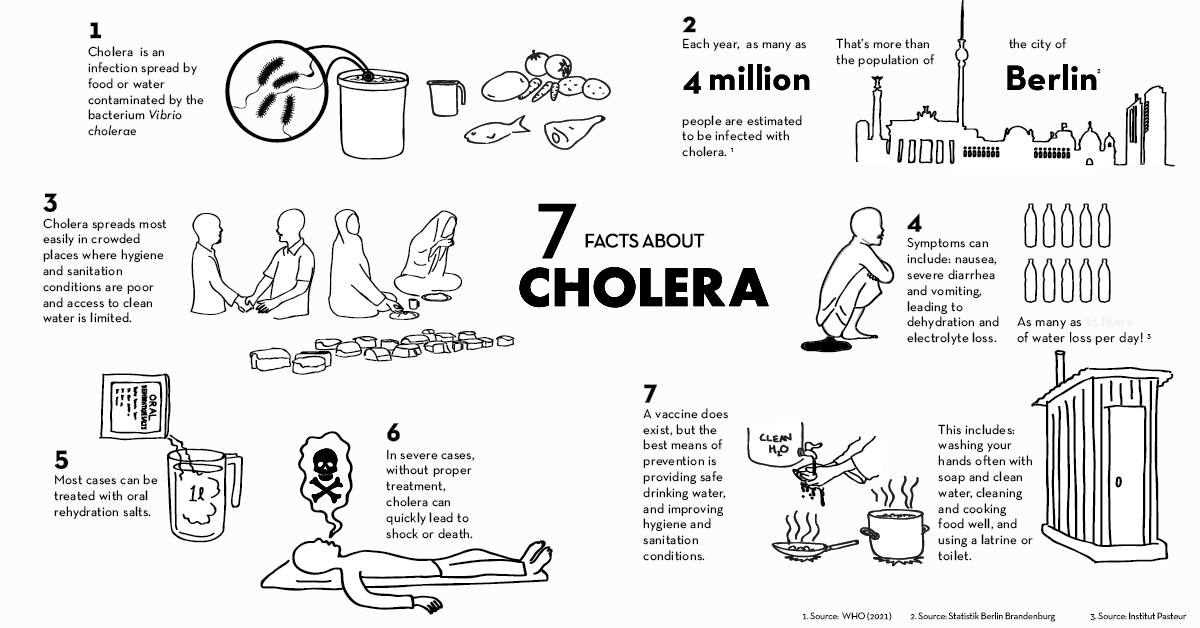
Symptoms:
Cholera is an acute diarrheal illness caused by infection of the intestine with Vibrio cholerae bacteria. People can get sick when they swallow food or water contaminated with cholera bacteria. The infection is often mild or without symptoms but can sometimes be severe and life-threatening. (4)
About 1 in 10 people with cholera will experience severe symptoms, which, in the early stages, include:(4)
- Profuse watery diarrhea, sometimes described as “rice-water stools”
- Vomiting
- Thirst
- Leg cramps
- Restlessness or irritability
Healthcare providers should look for signs of dehydration when examining a patient with profuse watery diarrhea. These include:
- Rapid heart rate
- Loss of skin elasticity
- Dry mucous membranes
- Low blood pressure
People with severe cholera can develop severe dehydration, which can lead to kidney failure. If left untreated, severe dehydration can lead to shock, coma, and death within hours. (4)
Management and treatment
The most important part of cholera treatment is preventing or reversing dehydration. Anyone with cholera should immediately replace the fluids and salts they’ve lost. A healthcare provider may prescribe:(5)
- Oral rehydration solution (ORS): You may have to drink large amounts of a prepackaged mix of sugar, salts, and water.
- Intravenous fluids: For a severe case of dehydration, a healthcare provider may use a needle to pump fluids directly into your veins.
Other treatments may include:(5)
- Antibiotics.
- Zinc in children younger than 5.
- cholera bacteria usually disappear from the body within two weeks.
Prevention and Control
To prevent cholera, you should wash your hands often and take steps to ensure your food and water are safe for use. Following these simple steps greatly reduces your risk of getting cholera in areas where cholera is spreading:(6)
-
Be sure you drink and use safe water.
- Use bottled water to brush your teeth, wash and prepare food, and make ice or beverages.
- If bottled water is not available, use water that has been properly boiled, chlorinated, or filtered using a filter that can remove bacteria.
- Use bottled water with unbroken seals.
Water from pipes, drinks sold in cups or bags, and ice may not be safe.
If you think your water may not be safe—treat it with a chlorine product, boil it, treat it with bleach, or filter it.
Treat with Chlorine Product
- Treat your water with one of the locally available chlorine treatment products and follow the label instructions.
Or boil it
- If a chlorine treatment product is not available, boiling is an effective way to make water safe. Bring your water to a rolling boil for 1 minute. Note: Boiled water is at risk for re-contamination if not stored and used safely.
Or Treat with Bleach
- If you cannot boil water, treat water with household bleach. Add 8 drops of household bleach for every 1 gallon of water (or 2 drops of household bleach for every 1 liter of water) and wait 30 minutes before drinking.
Or Filter It
- If filtering, use a device with a pore size less than or equal to 0.3 microns and treat the water with a disinfectant such as chlorine, chlorine dioxide, or iodine.
- Always store your treated water in a clean, covered container.
-
Wash your hands often with soap and safe water.
- Before, during, and after preparing food.
- Before and after eating food or feeding your children.
- After using the toilet.
- After cleaning your child’s bottom.
- After taking care of someone who is sick with diarrhea.
If you don’t have access to soap and water, use an alcohol-based hand rub with at least 60% alcohol.
-
Use toilets
- Use toilets or safely managed sanitation facilities to get rid of feces (poop). This includes the disposal of children’s poop.
- Wash hands with soap and safe water after going to the bathroom.
If you don’t have access to a toilet:
- Poop at least 30 meters (98 feet) away from any body of water (including wells) and then bury your poop.
- Dispose of plastic bags containing poop in latrines or at collection points if available or bury them in the ground.
- Do not put plastic bags in chemical toilets.
- Dig new latrines or temporary pit toilets at least a half-meter (1.6 feet) deep and at least 30 meters (100 feet) away from any body of water.
-
Boil it, cook it, peel it, or leave it.
- Cook food well, keep it covered, eat it hot, and peel fruits and vegetables.
- Eat foods that have been thoroughly cooked and are still hot and steaming. Be sure to cook seafood, especially shellfish, until it is very hot all the way through.
- Avoid raw vegetables and fruits that cannot be peeled.
-
Clean up safely.
- Clean food preparation areas and kitchenware with soap and treated water and let dry completely before reuse.
- Bathe and wash clothes or diapers 30 meters (100 feet) away from drinking water sources.
- Clean and disinfect toilets and surfaces contaminated with poop: clean the surface with a soap solution to remove solids; then disinfect using a solution of 1 part household bleach to 9 parts water.
- When finished cleaning, safely dispose of soapy water and dirty rags. Wash hands again with soap and safe water after cleaning and disinfecting.
Vaccine
Vaxchora
In December 2020, the maker of this cholera vaccine temporarily stopped making and selling it. This vaccine is currently unavailable. (7)
Vaxchora (lyophilized CVD 103-HgR) is a single-dose, oral vaccine FDA-approved in the United States for use in people aged 2–64 who are traveling to an area of active cholera transmission.
Vaxchora should be taken at least 10 days before travel to an area of active cholera transmission.
The vaccine manufacturer reports Vaxchora reduces the chance of moderate and severe diarrhea in people by 90% at 10 days after vaccination and by 80% at 3 months after vaccination. It is unknown how long protection lasts beyond 3–6 months after vaccination.
Dukoral, ShanChol, and Euvichol-Plus(7)
Three other oral cholera vaccines have been prequalified by the World Health Organization (WHO). They are:
- Dukoral
- ShanChol
- Euvichol-Plus/Euvichol
Where can a traveler get information about cholera?
- The global picture of cholera changes periodically, so travelers should seek updated information on countries of interest. CDC has a Travelers’ Health Website with information on cholera and other diseases of concern to travelers.
References:
- Cholera: Causes, Symptoms, Treatment, and Prevention [Internet]. [cited 2022 Nov 6]. Available from: https://www.webmd.com/a-to-z-guides/cholera-faq
- Ali M, Nelson AR, Lopez AL, Sack DA. Updated global burden of cholera in endemic countries. PLoS Negl Trop Dis. 2015 Jun 4;9(6).
- General Information | Cholera | CDC [Internet]. [cited 2022 Nov 6]. Available from: https://www.cdc.gov/cholera/general/index.html
- Illness and Symptoms | Cholera | CDC [Internet]. [cited 2022 Nov 6]. Available from: https://www.cdc.gov/cholera/illness.html
- Cholera: Symptoms, Causes, Treatment & Prevention [Internet]. [cited 2022 Nov 6]. Available from: https://my.clevelandclinic.org/health/diseases/16636-cholera
- Five Basic Cholera Prevention Steps | Cholera | CDC [Internet]. [cited 2022 Nov 6]. Available from: https://www.cdc.gov/cholera/preventionsteps.html
- Vaccines | Prevention and Control | Cholera | CDC [Internet]. [cited 2022 Nov 6]. Available from: https://www.cdc.gov/cholera/vaccines.html

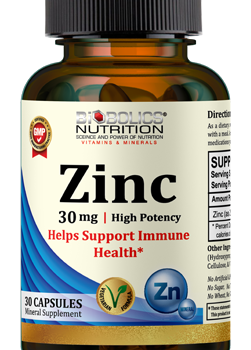
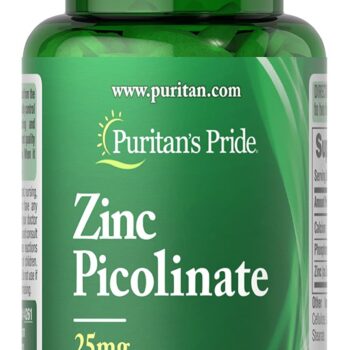

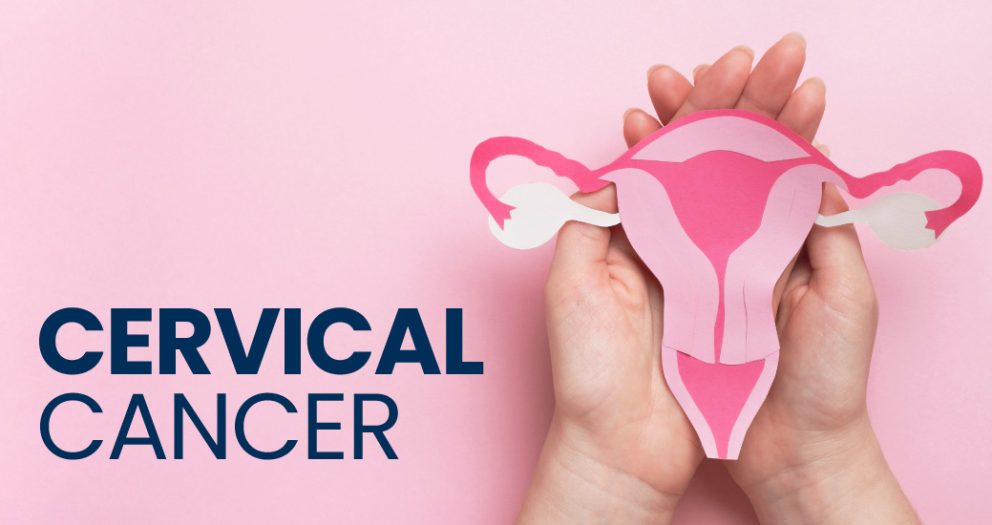

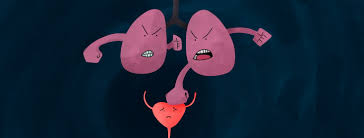
Write a comment
Your email address will not be published. All fields are required